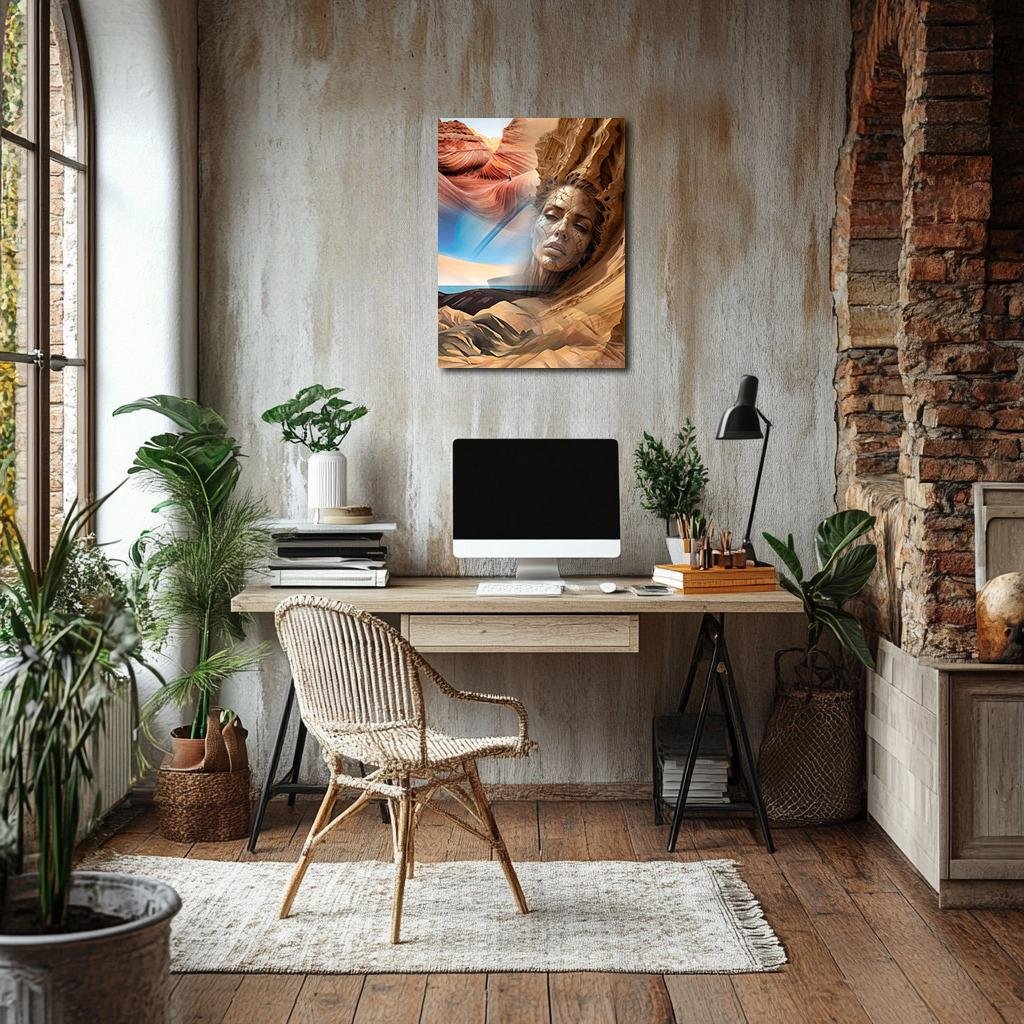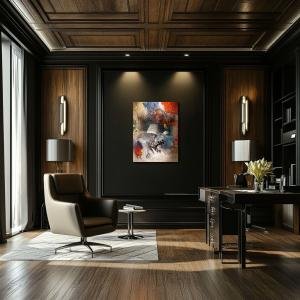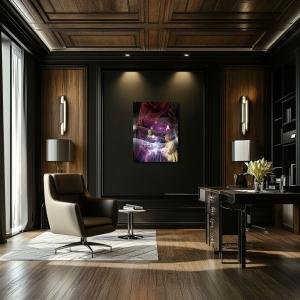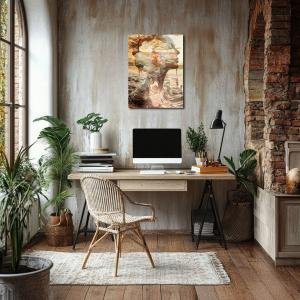Echo of Stone: Near Abiquiu, New Mexico
Echo of Stone reinterprets Georgia O’Keeffe’s Near Abiquiu, New Mexico as a spiritual fusion of woman and desert, turning the sandstone hills of New Mexico into a living, breathing monument of the feminine. A serene face carved into the cliffside evokes the enduring presence of time and memory, surrounded by O’Keeffe’s signature earth palette—warm ochres, corroded reds, and wind-softened shadows. Cracks across the visage mirror ancient canyons, while the sky’s quiet blue offers transcendence and peace. This conceptual collage speaks of strength, erosion, and stillness, capturing the sacred intimacy O’Keeffe held with the Abiquiu land she called home.
Please see Below for Details…
Hotline Order:
Mon - Fri: 07AM - 06PM
404-872-4663
Echo of Stone is a surreal expansion of Georgia O’Keeffe’s Near Abiquiu, New Mexico , unfolding the stark power of the desert into a mythic meditation on permanence, beauty, and the feminine landscape of endurance. This reimagining honors O’Keeffe’s original celebration of New Mexico’s majestic hills—those sweeping, sculptural layers of sandstone and shadow—but deepens the metaphor by fusing the desert with the contours of a woman’s face, cracked and serene like weathered earth, evoking the timeless union between body and land. It is a visual poem to erosion and resilience, a still hymn to the sacred slowness of geological time.
At the foundation of this work lies O’Keeffe’s unmistakable palette and perspective—bold ochres, rusted browns, rich siennas, and shadow-blued ridges bending gently under the weight of the desert sky. Her love for the American Southwest’s worn cliffs and sculpted rock faces finds powerful continuity in this composition. But now, above the familiar wave-like terrain, a colossal female visage rises as if born from the earth itself. Her face is chiseled into the sandstone, eyes closed in contemplation, with fissures running across her skin like canyons etched by years. She is part mountain, part spirit—an embodiment of time made flesh.
The image evokes the intimate connection O’Keeffe had with the land near Abiquiu, where she lived for many years and found endless inspiration in the bone-white mesas and warm, rolling hills. This reinterpretation takes her spatial language and renders it as emotional topography—here, the land does not simply reflect mood; it is the mood, it is the body. The woman’s face emerges from a swirling canyon, her expression both peaceful and worn, suggesting not sorrow but ancient knowledge. Her features resemble cracked clay, symbolic of age, drought, and endurance—yet she remains dignified, restful, still deeply alive.
The palette carries this message through temperature and texture. The lower landscape is painted in subdued gradients of sand, slate, and rust—each color echoing the mineral richness of the New Mexico hills. These tones rise into warm reds and sun-drenched corals within the canyon swirls at the top left, where a lone figure walks along the curved path, dwarfed by the monumental rock around them. This solitary presence is a reference to O’Keeffe herself, often seen exploring and absorbing the contours of her land in isolation, her gaze turning geography into abstraction. The swirling rocks recall the movement of brushstrokes—yet here they become almost tidal, flowing like fabric or dream.
Above, the sky transitions from desert pale into an ethereal dome of soft periwinkle and diffused white, symbolizing space, spirit, and quiet expansion. Against this backdrop, a faint solar flare crosses the composition like a diagonal brush of memory—perhaps a reference to the ephemeral movements of light O’Keeffe so revered in her painting sessions at dawn and dusk. The woman’s profile faces this sky, as if listening to it. Her presence evokes the mountains that surrounded O’Keeffe’s Abiquiu home—specifically the Cerro Pedernal, which the artist painted repeatedly and declared, “It’s my private mountain. God told me if I painted it enough, I could have it.”
Color plays an essential role in defining emotional temperature. The earth tones—rich ochres, sunburnt sienna, and golden clays—evoke warmth, shelter, and groundedness. The facial shadows carved from muted umber suggest age and memory. The soft blue of the sky, leaning into cooler purples and grays, contrasts with the sun-warmed canyons, providing a sense of calm and cosmic detachment. The entire composition glows with a dusty luminescence, as if seen through desert air at the end of a long, dry summer.
In Echo of Stone , I sought to expand O’Keeffe’s vision by turning the landscape into a living monument—feminine, cracked, eternal. Her love for form, isolation, and abstraction is honored here through the transformation of land into self and self into sacred land. The fusion of geological time with emotional presence suggests that we are all part of the slow, relentless beauty of erosion. The desert, like the human heart, wears down not in defeat, but in revelation.
Add your review
Your email address will not be published. Required fields are marked *
Please login to write review!
Looks like there are no reviews yet.








